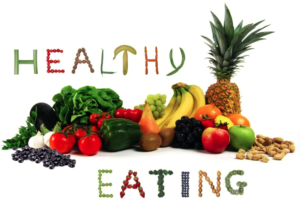
Fermented Foods: Why they are so beneficial
By Elaine Charles, part 3 in my series on healthy eating
Long before the beneficial bacteria known as probiotics hit store shelves, cultures around the globe have been enjoying the benefits of a microbe-rich diet courtesy of fermented foods.
Thousands of years ago, when fermented foods and beverages were first consumed, the microbial and enzymatic processes responsible for the transformations were largely unknown.
What was known was that fermentation extended the longevity of foods and they came to be valued for their medicinal and nutritive properties. According to the Food and Agriculture Organization of the United Nations (FAO):
“Fermentation is one of the oldest forms of food preservation technologies in the world. Indigenous fermented foods such as bread, cheese, and wine, have been prepared and consumed for thousands of years and are strongly linked to culture and tradition, especially in rural households and village communities.
The development of fermentation technologies is lost in the mists of history. Anthropologists have suggested that it was the production of alcohol that motivated primitive people to settle down and become agriculturists. Some even think the consumption of fermented food is pre-human.
The first fermented foods consumed probably were fermented fruits. Hunter-gatherers would have consumed fresh fruits but at times of scarcity would have eaten rotten and fermented fruits. Repeated consumption would have led to the development of the taste for fermented fruits.
There is reliable information that fermented drinks were being produced over 7,000 years ago in Babylon (now Iraq), 5,000 years ago in Egypt, 4,000 years ago in Mexico, and 3,500 years ago in Sudan…
Fermentation of milk started in many places with evidence of fermented products in use in Babylon over 5,000 years ago… China is thought to be the birth-place of fermented vegetables
… Knowledge about traditional fermentation technologies has been handed down from parent to child, for centuries. These fermented products have been adapted over generations; some products and practices no doubt fell by the wayside.
Those that remain today have not only survived the test of time but also more importantly are appropriate to the technical, social, and economic conditions of the region.”
Why Fermented Foods Should Be a Part of Your Diet
In the US, the preparation of fermented foods is a largely lost art, and even in areas where such foods are still widely consumed, there is danger of them being lost. FAO noted:
What they provide is a food source packed with beneficial microorganisms that most people, especially in the US, do not get elsewhere. Many are not aware that your gut houses about 85 percent of your immune system.
This is in large part due to the 100 trillion bacteria that live there, both beneficial and pathogenic, which can stimulate secretory IgA to nourish your immune response.
When your GI tract is not properly balanced, a wide range of health problems can appear, including allergies and autoimmune diseases. In fact, over the past several years, research has revealed that microbes of all kinds — bacteria, fungi, and even viruses — play instrumental roles in the functioning of your body. For example, beneficial bacteria have been shown to:
- Counteract inflammation and control the growth of disease-causing bacteria
- Produce vitamins, amino acids (protein precursors), absorb minerals, and eliminate toxins
- Control asthma and reduce risk of allergies
- Benefit your mood and mental health
- Impact your weight
One of the quickest and easiest ways to improve your gut health is via your diet. Beneficial microbes tend to feed on foods that are known to benefit health and vice versa.
Sugar, for example, is a preferred food source for fungi that produce yeast infections and sinusitis, whereas healthy probiotic-rich foods like fermented vegetables boost populations of health-promoting bacteria, thereby disallowing potentially pathogenic colonies from taking over.
Health Benefits of Fermented Foods
Fermented foods are potent chelators (detoxifiers) and contain much higher levels of beneficial bacteria than probiotic supplements, making them ideal for optimizing your gut flora. In addition to helping break down and eliminate heavy metals and other toxins from your body, beneficial gut bacteria perform a number of surprising functions, including:
- Mineral absorption, and producing nutrients such as B vitamins and vitamin K2 (vitamin K2 and vitamin D are necessary for integrating calcium into your bones and keeping it out of your arteries, thereby reducing your risk for coronary artery disease and stroke)
- Preventing obesity and diabetes, and regulating dietary fat absorption
- Lowering your risk for cancer
- Improving your mood and mental health
- Preventing acne
In the US, imbalances in gut flora are widespread, not only due to high sugar, high-processed food diets, but also due to exposure to antibiotics, both in medicine and via conventionally raised livestock.
The solution is simple – in addition to cutting back on sugar and antibiotics (choose organic foods as much as possible), consuming fermented foods will give your gut health a complete overhaul, helping to clear out pathogenic varieties, and promoting the spread of healing, nourishing microorganisms instead.
9 Tips for Making Fermented Vegetables at Home
You can ferment almost any vegetable, although cucumbers (pickles) and cabbage (sauerkraut) are among the most popular. Fermenting your own vegetables may seem intimidating, but it is not difficult once you have the basic method down. The nine tips that follow can help you get started:
1. Use Organic Ingredients
Starting out with fresh, toxin-free food will ensure a better outcome. If you don’t grow your own, a local organic farmer may sell cabbage, cucumbers, and other veggies by the case if you’re thinking of making a large batch.
2. Wash Your Veggies and Prepare Them Properly
Wash your vegetables thoroughly under cold running water. You want to remove bacteria, enzymes, and other debris from the veggies, as remnants could affect the outcome of your fermentation.
Next you’ll want to decide whether to grate, slice, or chop the veggies, or simply leave them whole. The decision is up to you and depends mostly on what you plan to do with the finished veggies (will you be using them as a condiment, a side dish, or as an appetizer?).
However, one “rule” is to keep the size of the veggies consistent within each batch, as the size and shape will impact the speed of fermentation. Grated veggies will have the texture of relish when finished (and may not need an added brine). Chopped veggies will take longer to ferment and usually require brine, while cucumbers, radishes, green beans, and Brussels sprouts may be left whole.
3. Try Pint and Quart Jars
There’s no need to spend large amounts of money on containers. The material they’re made of is important however. You do NOT want to use plastic, which may leach chemicals into your food, or metal, as salts can corrode the metal. Large, glass Mason jars with self-sealing lids make perfect fermentation containers, and they are a good size for most families. Make sure they are the wide-mouthed variety, as you’ll need to get your hand or a tool down into the jar for tightly packing the veggies.
4. Try a Stone Crock
If you want to make larger batches, try a stone crock. You can ferment about five pounds of vegetables in a one-gallon container, so a five-pound crock will hold about a five-gallon batch.
5. Prepare the Brine
Most fermented vegetables will need to be covered with brine. While you can do wild fermentation (allowing whatever is naturally on the vegetable to take hold), this method is more time consuming, and the end product is less certain. Instead, try one of the following brine fermentation methods:
Salt – Salt suppresses the growth of undesirable bacteria while allow salt-tolerant Lactobacilli strains to flourish. Salt will also lead to a crisper texture, since salt hardens the pectins in the vegetables. There are actually quite a few compelling reasons for adding a small amount of natural, unprocessed salt — such as Himalayan salt — to your vegetables. For example, salt:
- Strengthens the ferment’s ability to eliminate any potential pathogenic bacteria present
- Adds to the flavor
- Acts as a natural preservative, which may be necessary if you’re making large batches that need to last for a larger portion of the year
- Slows the enzymatic digestion of the vegetables, leaving them crunchier
- Inhibits surface molds
Salt-Free Brine – If you prefer to make your vegetables without salt, try celery juice instead. I recommend using a starter culture dissolved in celery juice.
Starter Culture – Starter cultures may be used on their own or in addition to salt, and they can provide additional benefits. For instance, I recommend using a starter culture specifically designed to optimize vitamin K2. My research team found we could get 400 to 500 mcgs of vitamin K2 in a two-ounce serving of fermented vegetables using a starter culture, which is a clinically therapeutic dose. The water used for your brine is also important. Use water that is filtered to be free of contaminants, chlorine, and fluoride.
6. Let Your Veggies “Ripen”
Once you’ve packed your veggies for fermentation, they’ll need to “ripen” for a week or more for the flavor to develop. You’ll need to weigh the vegetables down to keep them submerged below the brine.
7. Move the Veggies to Cold Storage
When the vegetables are ready, you should move them to the refrigerator. How do you know when they’re “done”? First, you might notice bubbles throughout the jar, which is a good sign. Next, there should be a pleasant sour aroma. If you notice a rotten or spoiled odor, toss the veggies, wash the container, and try again. Ideally, test the vegetables daily until you reach the desired flavor and texture. They should have a tangy, sour flavor when they’re done fermenting, but you can let them ferment an extra day or two depending on your preference.
8. Label Them
You’ll quickly forget when you made which batch and what’s inside your jars. A label can include the ingredients, the date made and even how many days you left it to ferment (the latter will help you in perfecting the “perfect” recipe).
9. Take a Local Class
Many communities host pickling or preserving classes to help you learn this traditional method of food preservation. So even if you don’t have a recipe passed down from your grandmother, you can still learn how to make fermented foods. Many groups even get together to make large batches at a time.






